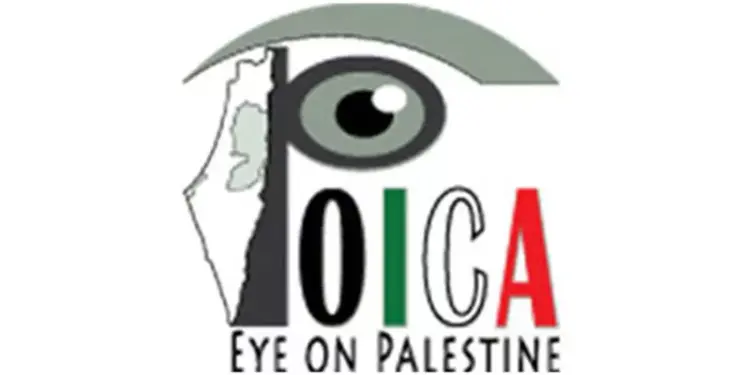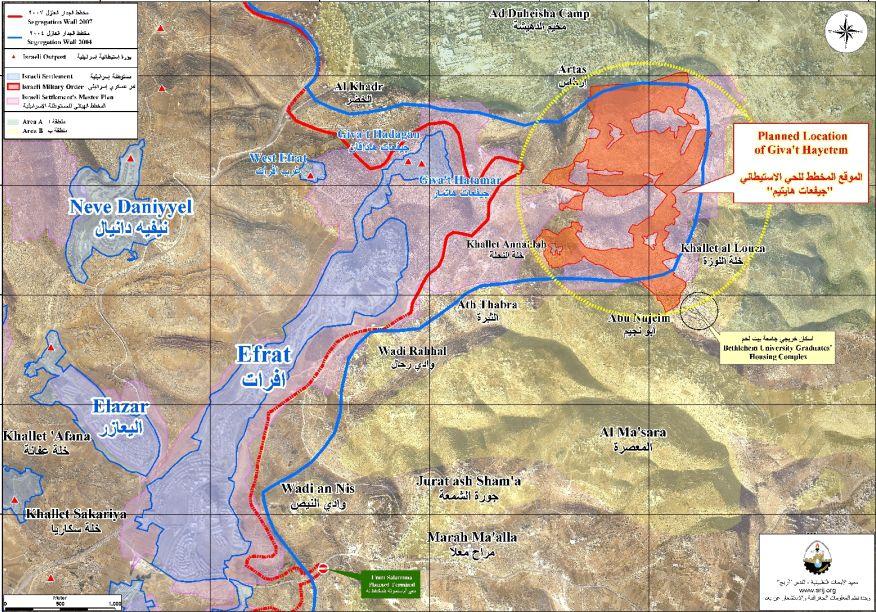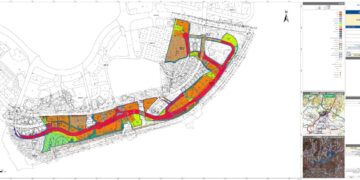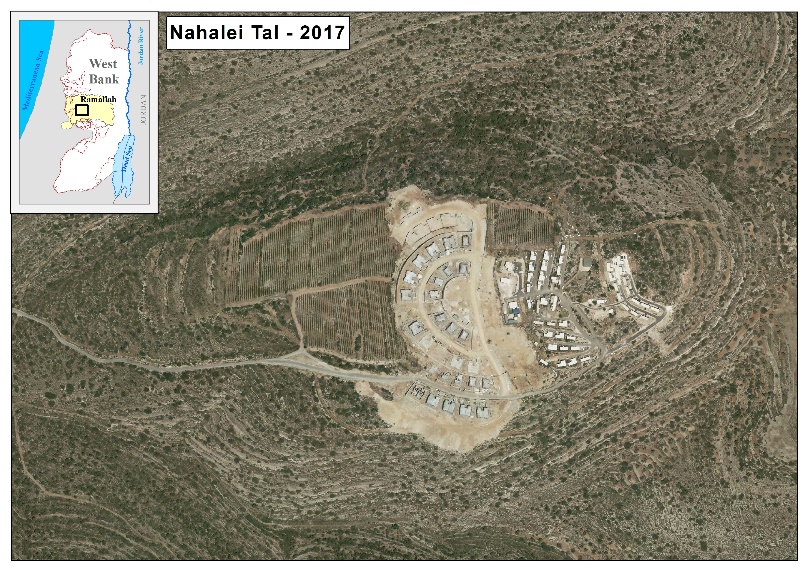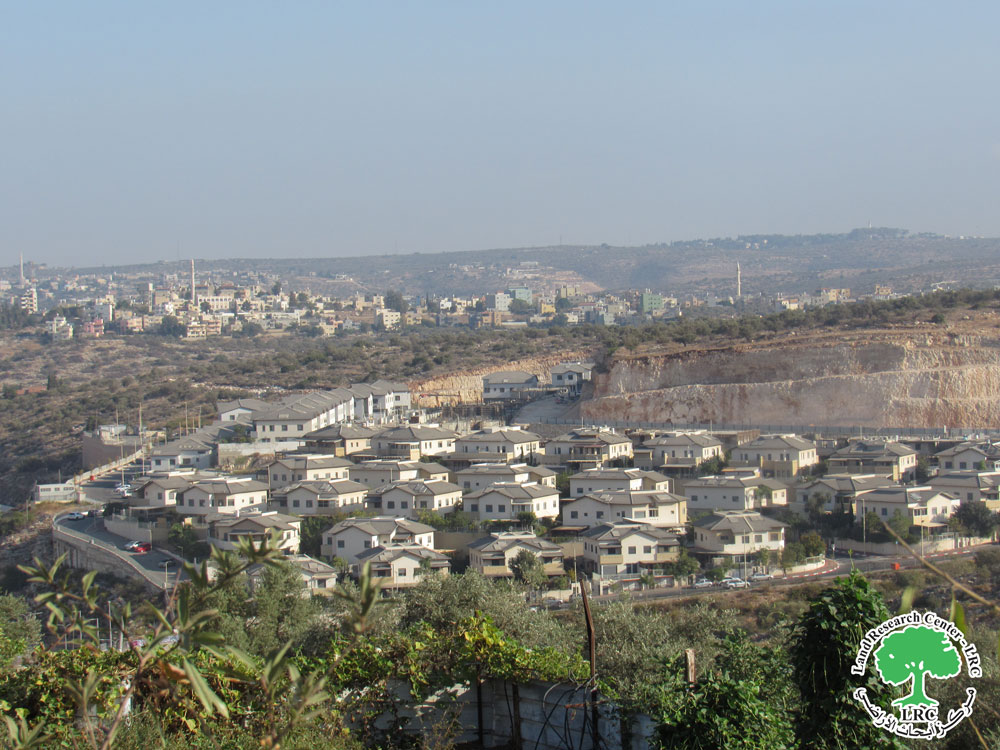On the 12th of December 2011, the Israeli daily newspaper ‘Haaretz’ published on its website that the Israeli Defense Minister Ehud Barak approved the expansion of two locations in the vicinity of Efrat Settlement in the Gush Etzion Settlements Bloc, in the southern part of Bethlehem Governorate. The approval includes two plans; the first is to construct 40 new housing units in the outpost named Giv’at Hadagan which is already inhabited by around 40 Israeli settlers. The expansion comes to replace the currently existing 40 trailers in the outpost with permanent housing units. It is worth mentioning that 10 of the housing units that gained approval of the Israeli Defense Ministry are already built with a total area of 160 m² per each house, while the remaining 30 housing units are going to be built in the outpost. The second plan states the establishment of a farm on the eighth hill of Efrat settlement, named Giv’at Hayeitem.
Giv’at Hadagan & Giv’at Hayeitem:-
Giv’at Hadagan outpost is located on the seventh hill of Efrat Settlement, to its north and is inhabited by around 40 Israeli settlers. The latest revised route of the Israeli segregation wall plan which was published on the Israeli ministry of Defense’s website on April 30, 2007, the outpost is set within the track of wall, and upon completion, the outpost, will be annexed to Israeli along with 11 Israeli settlements and 7 Israeli outposts which constitute the Gush Etzion settlement bloc.
It is worth mentioning that the Giv’at Hadagan plan is not new; as in the beginning of the 90’s, the Government of Israel submitted a plan to build a new neighborhood in the current location of Giv’at Hadagan. The plan included the building of 500 new housing units in the site; but due to political & security reasons, the plan wasn’t implemented; at the time as well, Israel was engaged in negotiations with the Palestinians and was about to sign the Oslo II Interim agreements; as a reaction, a group of Israeli settlers stormed the targeted area in August 1995 and settled down with their trailer homes in an attempt to seize the area and annex it so that it won’t be given back to Palestinians under any future agreement with the Palestinians.
While the planned Giv’atHayeitem neighborhood, its location is designated on the eighth hill of Efrat settlement, to its northeast, on lands of Artas Village. According to the segregation wall plan of 2004, the Planned Giv’at Hayeitim neighborhood was set within the area Israel plans to annex upon wall completion (the western segregation zone of Bethlehem). Later in 2005, the Israeli ministry of Defense issued a revised wall plan which excluded the location of the planned Giv’at Hayeitem neighborhood, and set it outside the area to be annexed by the wall (the western segregation wall).
Again in mid February 2009, the Israeli military court affiliated to the Israeli Civil Administration rejected Eight out of nine petitions filed by Palestinians of Al Khader and Artas communities in Bethlehem Governorate against an israeli military order issued back in 2004 and stated the seizure of 1700 dunums of Palestinian lands, allegedly for being declared as ‘State Land’. Therefore, the Israeli court’s order came to confirm the seizure of the land, the thing that might be considered as an Introduction to the re-annexation of the area west of the wall as it was back in 2005; at least with regard to the Gush Etzion settlements’ bloc.
Efrat Settlement:
The settlement of Efrat was established in 1979, on lands originally confiscated from the Palestinian villages of Artas and Al-Khader. Today the settlement occupies a total land area of 2180 dunums and houses 8300 Israeli settlers, (PCBS, 2009). It is located some 6.6 km from the 1949 Armistice line (Green line) and 5.3 km south of Bethlehem city. Two main outposts were erected in the vicinity of Efrat settlement, they are: Giv’at Hatamar and Giv’at Hadagan. Another outpost which is in the move to be erected and gained the Israeli ministry of Defense approval is Giv’at Hayetem. See Map 1 for more information. for more information.
Map01: GIS Unit / ARIJ 2011
The three outposts (the existing and planned) are located within Efrat’s settlement master plan, which was put forth by the Israeli civil administration in 1991. Efrat’s master plan is set to occupy a total area of 7586 dunums of lands, 3 times larger than its current area, and is slated to expand on the lands of the surrounding Palestinian communities of Artas and Al Khader. Image 1 shows the expansion of Giv’at Hadagan outpost over the last couple of years, 2009 & 2011.
Gush Etzion settlement bloc and the Greater Jerusalem plan
When Israel declared the occupied part of Jerusalem (east Jerusalem) as the unified and eternal Capital of the State of Israel, it had done so after realizing it will not be able to combat the demographic parity that favors the Palestinian on the long run, an issue that made Israel recognize the need to inflict new facts on the ground and ensure Jewish majority, thus making any negotiation over the city’s fate utterly infertile. For that purpose Israel worked to inflate the population of the Israeli settlements on the outskirts of Jerusalem, also known the ‘outer-ring’ settlements, which are set to be inside the Greater Jerusalem parameter; Giv’at Ze’ev in the North, Ma’ale Adumim in the East and the Gush Etzion bloc in the south. Efrat settlement is located within the gush Etzion settlement bloc, and the approval to build in the two aforementioned locations within its borders, is an example of Israel’s plan to intensify settlement construction within the boundaries of Jerusalem city and it surroundings, inside the greater Jerusalem parameter.
Israeli Declarations related to Settlements Expansion in general & Efrat in specific:
Focusing on settlements’ activities in and around Jerusalem is an Israeli policy no matter who is in power in Israel; meaning that it is an issue agreed upon by all political parties in Israel.
[G.1] This has been made clear in the various statements declared by the many Israeli politicians and officials in the Government of Israel, especially regarding the Israeli settlements’ blocs surrounding Jerusalem city, some of which is stated below:
- ‘Places like a strong Ma’ale Adumim, a strong Ariel, a strong Givat Ze’ev, a strong Gush Etzion. I would add a strong Jewish community of Hebron and a strong Kiryat Arba. These places will remain in Israeli control and will continue to be strengthened and developed.’ (April, 2004)‘The Gush Etzion and Ma’ale Adumim settlement blocs will remain within the security fence and are an inseparable part of Israel.’ Former Israeli Prime Minister Ehud Olmert , February 2006 ‘My instructions are that Gush Etzion and Ma’ale Adumim remain an inseparable part of the State of Israel.’ Former Israeli Prime Minister Ehud Olmert , (February 2006)
- ‘Israel will never withdraw to ’67 borders, because those borders are not defensible.” Former Israeli Prime Minister Ehud Olmert , (June 2006)
Conclusion:
Israel’s operations in the occupied Palestinian territory and the Israeli settlers’ aggressions against Palestinians lands and properties are considered flagrant violation of the international law, human conventions and declarations, and apparently seem to be of no concern to Israel. Some of the Conventions and Declarations of the International Community Laws are:
- The Hague Convention 1907, Article 23 stated: ‘In addition to the prohibitions provided by special Conventions, it is especially forbidden to destroy or seize the enemy’s property, unless such destruction or seizure is imperatively demanded by the necessities of war’.
- Universal Declaration of Human Rights, the 10th of December 1948, General Assembly Resolution 217/A/III, Article 17 stated: ‘No one shall be arbitrarily deprived of his property.’ Which means it bans Israel from destroying or confiscating the property of the Palestinians at any case’.
- Geneva’s 4th Convention, Article 147 stated: ‘Extensive destruction and appropriation of property not justified by military necessity and carried out unlawfully and wantonly. Is a grave breach of the Convention’.
- Paris Protocols of 1954 states: ‘free access for Palestinian goods to the Israeli market and vice versa.’ The curfews and the uprooting are a clear violation of this clear security’.
::::::::::__
[1] Wind of Change Storm as the Likud is back to Power in Israel
https://poica.org/editor/case_studies/view.php?recordID=1839
[2] Wind of Change Storm as the Likud is back to Power in Israel
[G.1]Do the lefties agree on settlement building
Prepared by:


